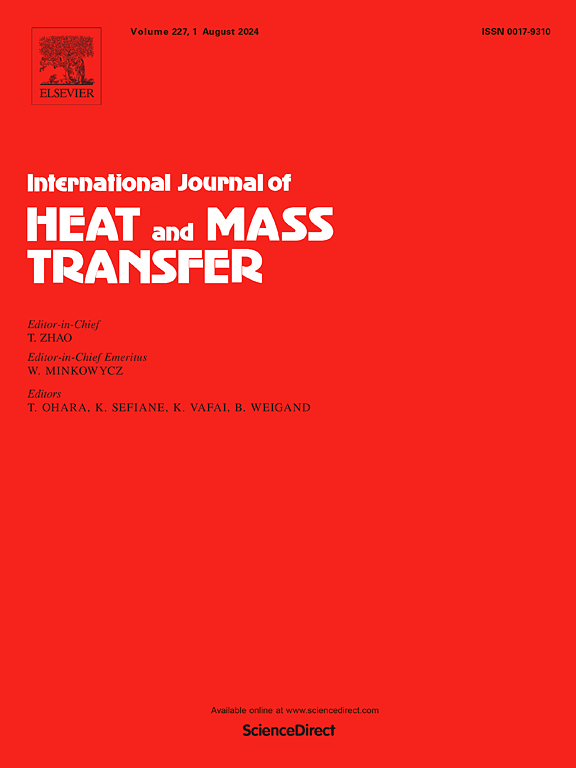A switchable dual-mode integrated photonic multilayer film with highly efficient wide-angle radiative cooling and thermal insulation for year-round thermal management
IF 5
2区 工程技术
Q1 ENGINEERING, MECHANICAL
International Journal of Heat and Mass Transfer
Pub Date : 2025-02-04
DOI:10.1016/j.ijheatmasstransfer.2025.126783
引用次数: 0
Abstract
Global warming and energy shortages necessitate the development of photonic thermal management technologies capable of reducing energy consumption in outdoor structures, such as edifices and vehicles, via infrared radiative cooling and thermal insulation. However, current photonic thermal management devices can only achieve one mode or realize modes switching by inconveniently flipping. To make up for these deficiencies, this study introduces a photonic multilayer film (PMF) based on Weyl semimetal, designed to switch between high-efficiency, wide-angle radiative cooling and thermal insulation modes by voltage regulation, which offers a practical solution for year-round photonic thermal management. During hot summers, PMF in the cooling mode exhibits high reflectivity (98.40 %) within solar spectrum and superior infrared emissivity (95.88 %) within atmospheric window, performing efficiently across −71°∼72° incident angle range. In contrast, during cold winter nights, the insulation mode of PMF achieves low emissivity (6.74 %) in atmospheric window, minimizing heat loss with stable performance at a wide angle range of −89° to 89°. Through this voltage-modulated efficient dual modes strategy, PMF outperforms conventional building materials, offering significant temperature reductions of 8.15 °C for cooling and slight temperature drops of 0.639 °C for insulation. These results help to better design year-round energy-efficient outdoor structures, which can contribute to sustainable energy development and the promotion of a low-carbon economy.
求助全文
约1分钟内获得全文
求助全文
来源期刊
CiteScore
10.30
自引率
13.50%
发文量
1319
审稿时长
41 days
期刊介绍:
International Journal of Heat and Mass Transfer is the vehicle for the exchange of basic ideas in heat and mass transfer between research workers and engineers throughout the world. It focuses on both analytical and experimental research, with an emphasis on contributions which increase the basic understanding of transfer processes and their application to engineering problems.
Topics include:
-New methods of measuring and/or correlating transport-property data
-Energy engineering
-Environmental applications of heat and/or mass transfer

 求助内容:
求助内容: 应助结果提醒方式:
应助结果提醒方式:


